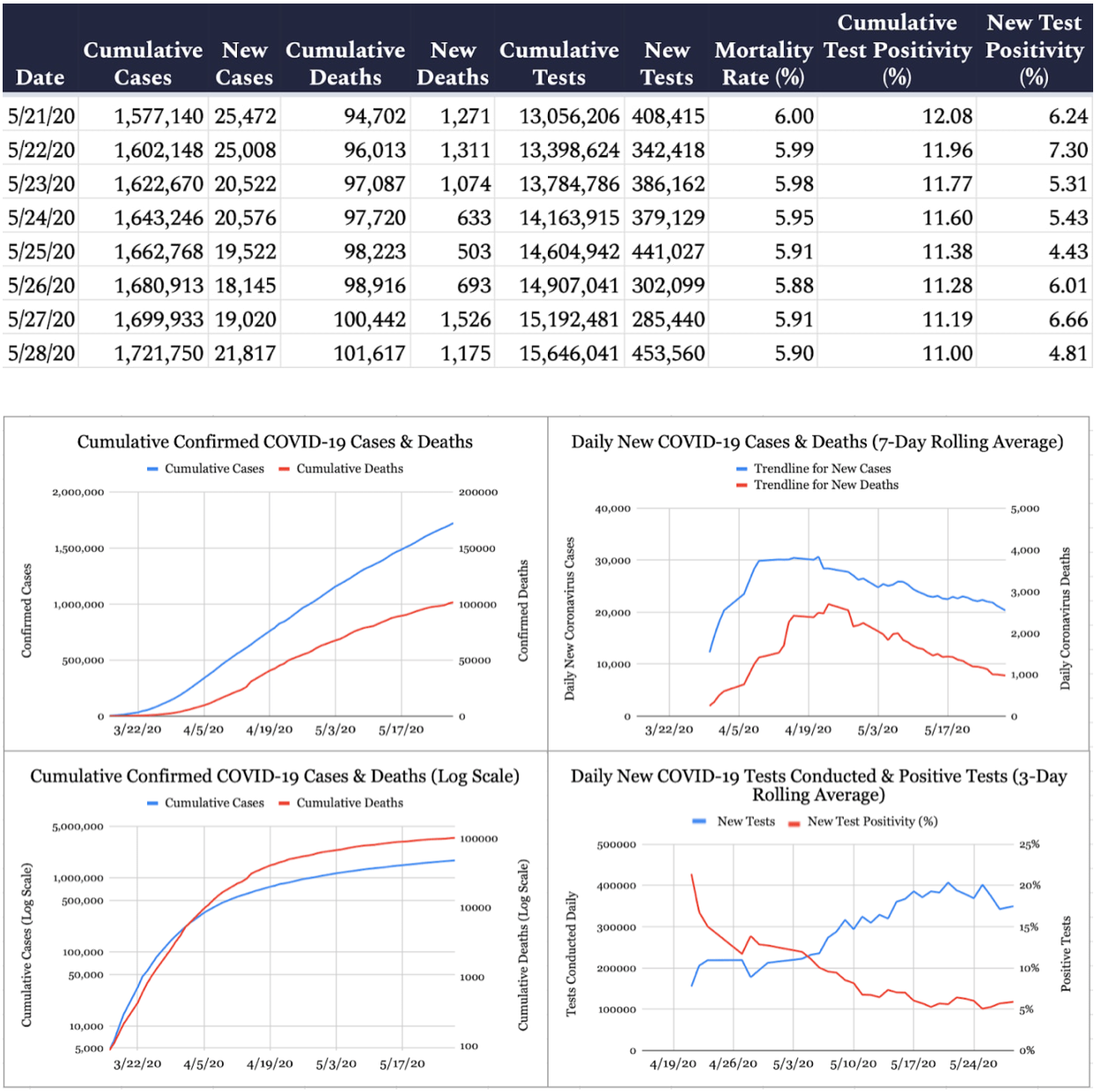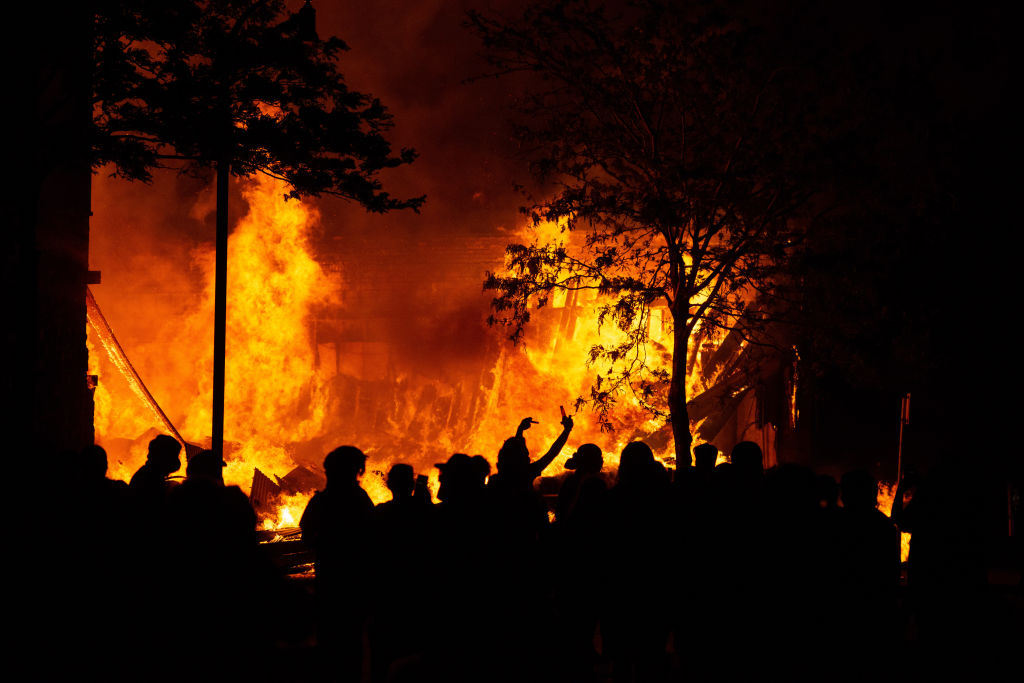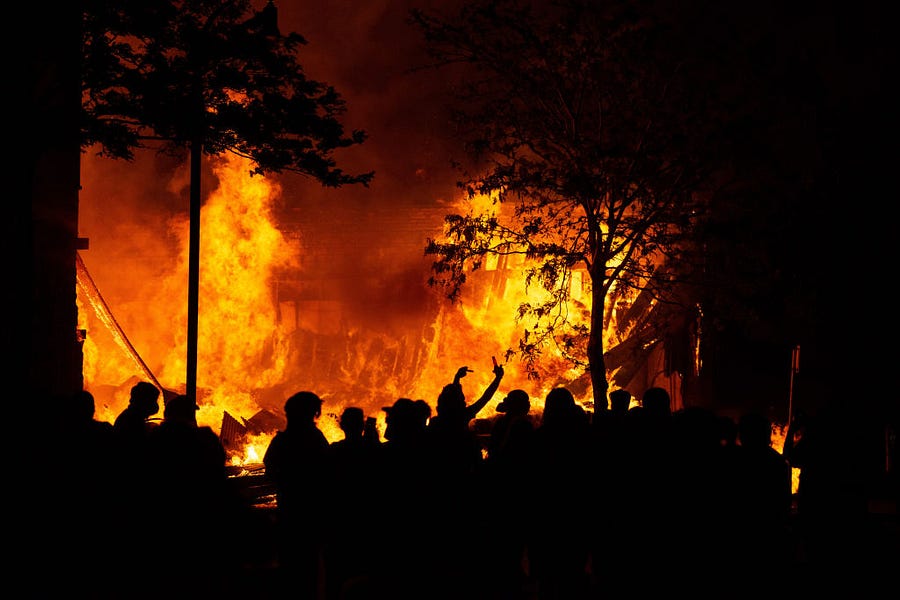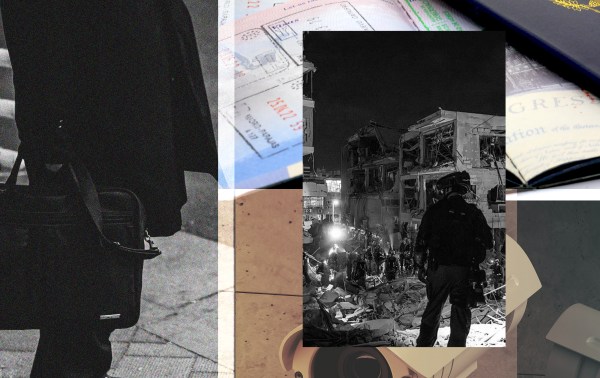Happy Friday. Grim news overnight out of Minneapolis and across the country, where protests over George Floyd’s death continued, turning violent as frustrations boiled over.
Quick Hits: Today’s Top Stories
-
As of Thursday night, 1,721,750 cases of COVID-19 have been reported in the United States (an increase of 21,817 from yesterday) and 101,617 deaths have been attributed to the virus (an increase of 1,175 from yesterday), according to the Johns Hopkins University COVID-19 Dashboard, leading to a mortality rate among confirmed cases of 5.9 percent (the true mortality rate is likely much lower but it’s impossible to determine precisely due to incomplete testing regimens). Of 15,646,041 coronavirus tests conducted in the United States (453,560 conducted since yesterday), 11 percent have come back positive.

-
President Trump officially signed an executive order Thursday directing the FCC to “clarify” aspects of Section 230 of the Communications Decency Act. The move could limit legal protections for social media platforms—and internet communications more broadly—that have been in place for decades.
-
Facebook CEO Mark Zuckerberg attempted to draw a distinction between his company’s content moderation policy and Twitter’s. “We have a different policy than Twitter, I think, on this,” he said in an interview, adding that he “believes strongly” that social media platforms shouldn’t act as “the arbiter of truth of everything that people say online.”
-
An additional 2.1 million Americans filed for unemployment insurance this week, bringing the cumulative tally over the past 10 weeks to 40.8 million. Some positive news, though, as continuing claims—those who have been collecting benefits for at least two weeks—fell by 3.86 million week-over-week to 21.05 million.
-
Sam Johnson, former 13-term Texas congressman and veteran of both the Korean and Vietnam wars, passed away on Wednesday at the age of 89.
-
The United Kingdom’s Premier League is scheduled to resume play on June 17 after suspending game action on March 13.
-
CNN reporter Omar Jimenez and his camera crew were arrested on-air this morning while reporting on the increased police presence in Minneapolis. CNN’s live footage showed Jimenez asking officers where they would like the crew to move to in order to be out of the way before being placed under arrest, and CNN’s Josh Campbell said the police informed them they were being arrested because they were told to move and didn’t.
A Tale of Two Protests

The protests over the death of George Floyd that gripped Minneapolis for the third day yesterday were a study in contrasts. Tens of thousands gathered to march in front of the Hennepin County Government Center Thursday afternoon, calling for justice to be served against the officers who pinned Floyd to the asphalt, one with his knee on Floyd’s neck.
The day’s news had seemingly only added fuel to their grievance. New surveillance video of Floyd’s arrest seemed to contradict police claims that he had resisted arrest. And a Minnesota prosecutor provoked further outrage when he told reporters that there was “other evidence that does not support a criminal charge”—a claim his office immediately walked back.
“No justice, no peace,” the protestors chanted. “Prosecute the police.” The mood was angry, but restrained—marchers wore masks and even practiced social distancing. Confrontation with police was limited, although some cops were apparently pretty free with the pepper spray.
A few hours later, a darker scene unfolded in front of the Minneapolis police’s Third Precinct. Demonstrators threw objects at officers stationed on the rooftop while police fired tear gas to try to keep the crowd behind a barricade, keeping them out of the parking lot. Then, at about 10 p.m., chaos broke out: The police pulled up stakes and fled as the crowd broke into the building, destroying its contents and lighting it ablaze. The city of Minneapolis urged people to retreat from the precinct, warning that gas lines might have been cut and that the building could explode.
Although Gov. Tim Walz had activated 500 national guardsmen to the Twin Cities earlier Thursday, they were not immediately deployed to contain the rioting. More buildings soon were up in flames. Protests elsewhere in the city were eventually contained, but the area of the Third Precinct was simply left to burn. Fire trucks that attempted to deploy to the area had items thrown at them, fireworks shot at them, and windows broken too; eventually, the fire department said they would only respond to fires where lives were in danger.
“The people are just destroying everything,” a reporter live-streaming for leftist alt-media site Unicorn Riot said shortly after 2 a.m. “Nothing is safe from being destroyed.” Behind him, a group was busily pulling down traffic lights. Many of the rioters said they’d traveled from out of state—from Nebraska, from Illinois.
At about 2:30 a.m., Minneapolis Mayor Jacob Frey held an emergency press conference and announced he had made the decision to evacuate the Third Precinct.
“It became clear that there were imminent threats to both officers and the public,” Frey said. “Brick and mortar is not as important as life.” Asked where police were as the city burned, Frey responded that “We are doing everything we can to keep the peace.”
Violence also broke out—on a much smaller scale—at similar protests around the country. In Columbus, Ohio, protesters broke windows, looted a DGX store, and attempted to storm the state courthouse. Shots were fired at a protest in Denver. Another demonstration was quashed by police in Phoenix. And seven people were shot at a Louisville protest over the death of Breonna Taylor, who was shot and killed on March 13 by police who had conducted a no-knock raid on her apartment.
At nearly 1 a.m., President Trump waded in, taking aim at “the very weak Radical Left Mayor, Jacob Frey,” pledging to send in the National Guard (although, again, it had already been deployed), and threatening ominously that “when the looting starts, the shooting starts.”
Worth Your Time
-
For those interested in the ongoing internecine debates within American conservatism, Timothy Sandefur just wrote this rousing defense of the classical liberal position for the Claremont Institute’s American Mind. Sandefur’s broadside against the ascendant statist elements of the conservative coalition makes some arguments that are sure to be controversial—such as linking the philosophical godfather of conservatism, Edmund Burke, to both Benito Mussolini and the social justice Left—but his defense of limited government and what he describes as our “secular, liberal, bourgeois republic” is worth taking seriously.
-
Anne Helen Peterson explores the relationship between the coronavirus pandemic and the consumer culture that lies at the heart of American society’s self-understanding. Americans like to buy things—as Peterson points out, this has actually been a central aspect of Americana since World War II. In prosperous times, there is a lot to be said for our collective affinity for spending money; in many ways, it’s made our society the most prosperous, vibrant, and dynamic in the world. But, Peterson asks, “when a society-throttling, economy-decimating pandemic comes along, what happens when that ability and, just as importantly, that desire—goes away?” Coronavirus has undeniably caused a collapse in America’s interest in buying and spending. What if that collapse is permanent?
-
The New York Times Magazine looks at the pandemic’s effect on Amazon, the massive online retailer headed up by billionaire Jeff Bezos. “Amazon’s obsessive focus on making finding, purchasing and returning things online as easy and fast as possible has won it loyalty,” John Herrman writes. “In so many ways, this was the future Amazon had been planning for: Brick-and-mortar stores were closed, consumers were eager to order all manner of things online and the brand was all but synonymous, already, with e-commerce.” One would imagine this reality would be good news for Amazon’s bottom line, but it’s also caused a host of unforeseen issues that Bezos and company continue to struggle with.
-
On May 28, 1998, then-Arizona Diamondbacks manager Buck Showalter made the call to intentionally walk Barry Bonds—arguably the best hitter in the league at the time. This normally wouldn’t raise eyebrows; Bonds finished his career with more than twice as many intentional walks as any other hitter in baseball history. But what set that fateful day in 1998 apart: The bases were loaded. At Sports Illustrated, Stephanie Apstein put together a wonderful oral history of Showalter’s decision, and how it has stuck with all those involved. “There’s always a base open. That night, it was home plate.”
Presented Without Comment
Also Presented Without Comment
Toeing the Company Line
-
You just knew David was going to write about Trump’s social media executive order, didn’t you? His latest French Press (🔒) explains Section 230 of the Communications Decency Act—i.e. how we got here—before dissecting the order itself and making a recommendation: “Twitter (and every other social media company) should not only challenge unconstitutional regulations, it should tell Trump his special privileges are over. To them, he shouldn’t be President Trump. Instead, he should be Donald Trump, and Donald Trump has to comply with the terms of service.”
-
Thursday’s Advisory Opinions was a good one. Trump’s social media executive order, the latest developments in the death of George Floyd in Minneapolis, proxy voting in the House—David and Sarah discuss it all here.
-
Alec’s latest Dispatch Fact Check dispels a viral rumor that Derek Chauvin—the Minnesota police officer captured on video with his knee on George Floyd’s neck—has also been captured in pictures wearing a MAGA-inspired “Make Whites Great Again” hat. Turns out, the hat-wearer is someone else entirely—a longtime internet troll named Jonathan Riches.
-
On the site today, Bob Driscoll, a former deputy assistant attorney general, discusses George Floyd’s death and also looks back on 20 years of high-profile cases of alleged police misconduct. “Even if the legal system convicts one officer of one crime, that does not relieve us of our responsibility to confront our country’s truth about race,” he writes.
Let Us Know
As things continue to open back up across the country—D.C. is officially lifting its stay-at-home order and moving into Phase I of reopening today—are your weekends starting to look any different? Where do you personally feel you are on the path back toward normalcy?
Reporting by Declan Garvey (@declanpgarvey), Andrew Egger (@EggerDC), Sarah Isgur (@whignewtons), Alec Dent (@Alec_Dent), Nate Hochman (@njhochman), and Steve Hayes (@stephenfhayes).
Photograph by Steel Brooks/Anadolu Agency/Getty Images.







Please note that we at The Dispatch hold ourselves, our work, and our commenters to a higher standard than other places on the internet. We welcome comments that foster genuine debate or discussion—including comments critical of us or our work—but responses that include ad hominem attacks on fellow Dispatch members or are intended to stoke fear and anger may be moderated.
With your membership, you only have the ability to comment on The Morning Dispatch articles. Consider upgrading to join the conversation everywhere.